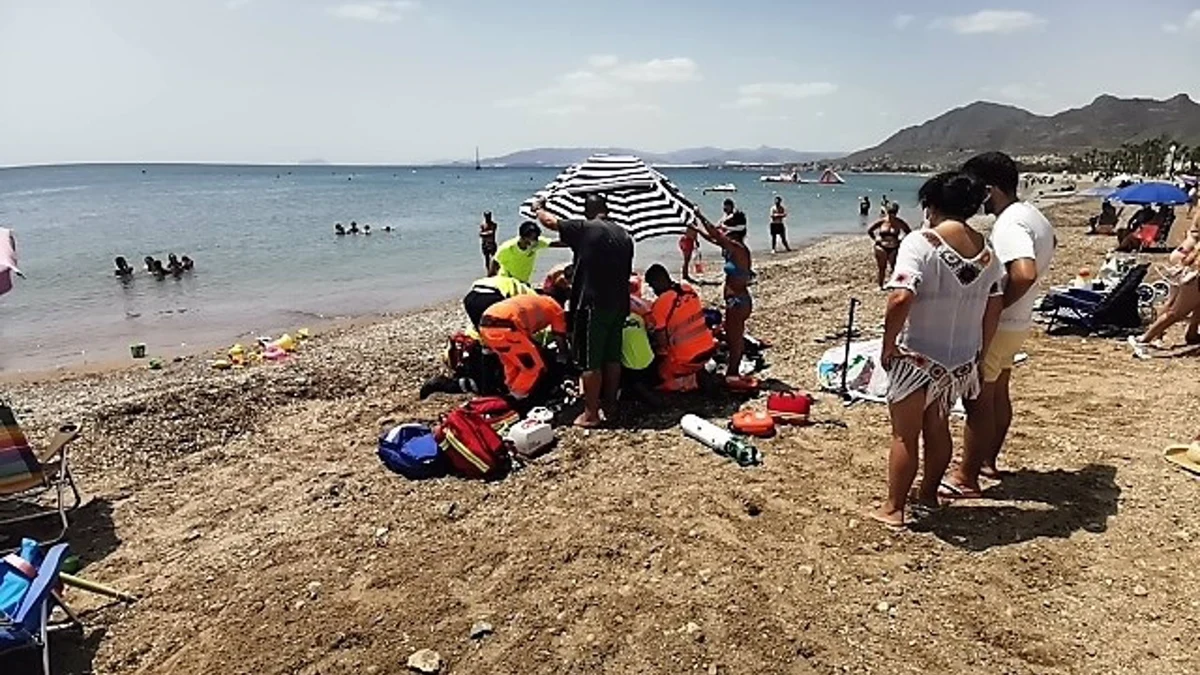Gladys Heredia, a 58-year-old diabetic grandmother from Peru, said city officials told her Wednesday that after June 10, she could no longer stay at a migrant shelter in Streeterville because it is shutting down. She said she’s worried about how her family will be able to survive.
Heredia, her daughter, and her daughter’s 4-year-old arrived in Chicago in early May. They were at a migrant shelter at the Inn of Chicago for 10 days before being told they had to leave, Heredia said.
“I’m going to live on the street with a baby,” said Heredia’s daughter, Lizbeth. “People could violate her, or do something bad to her,” she said.
The uncertainty this family of three went through this week is consistent with the experiences of dozens of others, who reached out to volunteers for help after being told in meetings with city officials that their shelters would close June 10.
When city officials announced the looming eviction day, it set off a wave of worry and panic among people living in the shelters. Many come with little means, can’t work legally, don’t have family in Chicago and don’t know where to go.
Dozens of migrants interviewed by the Tribune at four migrant shelters around the city say they are unclear about where they will live and what will happen to them on the day of the deadline.
City officials said they have no plans to close shelters on June 10, but provided no other information about how that information was communicated.
“The policy has not changed since the City publicly announced it out on March 15th,” said Cassio Mendoza, Mayor Brandon Johnson’s deputy press secretary.
Because the tens of thousands of migrants coming to Chicago are fleeing political persecution, famine or economic disaster, they carry that trauma with them, according to immigration experts and advocates. They say messaging from the city needs to be especially thoughtful and consistent.
“They say we are going to be put out on the street. It’s like we don’t matter,” said Daibelys Benítez, a 24-year-old from Peru staying at a different migrant shelter, in the West Loop.
Gianfranco Giordano, 9, from Venezuela, holds his 1-year-old bother, Omar Giordano, outside a migrant shelter at the Inn of Chicago on May 17, 2024. (Armando L. Sanchez/Chicago Tribune)
Shifts in city strategy
As 41,728 asylum-seekers have passed through Chicago in nearly two years — mostly sent on buses by Texas Gov. Greg Abbott – city officials have had to react quickly. They often have to make game-time decisions to ever-changing situations, with little to no notice for the migrants most affected.
As a result, information — particularly misinformation — can make its way through the migrant community quickly, said Veronica Castro, deputy director of the Illinois Coalition for Immigrant and Refugee Rights. She partners with community-based organizations that work with migrants in shelters who have experienced this firsthand.
“The city is trying to encourage folks to get to a point where they are able to be self-sufficient,” she said. “We’ve tried our best as the organizations that have been doing that in-between work.”
At the height of migrant shelter operations in January, city officials were housing close to 16,000 migrants in 28 shelters across Chicago. But maintaining shelters is expensive, and Chicago’s migrant response has already cost $372 million, according to city officials.
In March, feeling the crunch, Mayor Johnson enacted a policy dictating migrants can stay in shelters for no more than 60 days unless they meet certain exemptions. City officials issued three 30-day extensions to families staying in shelters with kids registered in school.
The last 30-day extension ends June 10, and hundreds of families with kids will be expected to leave.
People walk outside of Chicago’s landing zone for migrants on South Desplaines Street at Polk Street on May 14, 2024. (Chris Sweda/Chicago Tribune)
They will be brought to the city’s “landing zone” — a parking lot in the West Loop with several large white tents — where if there is space, they can reenter one of the 16 temporary emergency shelters still housing 7,604 asylum seekers.
In short, they will sleep on city-provided warming buses for an indefinite period until future arrangements are made for them — which migrant advocates say is an anxiety-producing loop that is disruptive to assimilation in a new country.
Bleidys Bonolli, 40, said information about reentering the system was not communicated to her.
She said city officials had a meeting Wednesday on each floor of a West Loop shelter and told them the shelter was closing. The news hit everyone with surprise, she said, as she held her 2-year-old on her hip.
“We asked the man who came to talk to us a lot of questions but he didn’t have answers. He said we couldn’t take a recording of the meeting,” she said. “This comes from the president, right?”
Bonolli, who arrived in Chicago two months ago after traveling with her three kids from Colombia, hasn’t been able to find stable work. She said “everyone is worried” inside the shelter. She sees hundreds of families in the same situation.
Bleidys Bonolli, 40, from Colombia, holds her daughter Angely Acosta, 2, while standing outside a migrant shelter on North Ogden Avenue on May 16, 2024. (Armando L. Sanchez/Chicago Tribune)
“I walk around all the time and see people living on the street. This is a rich country with such high potential. They should help indigent people,” she said.
A bad dissemination of information can heighten stress for people in already stressful situations, said Aimee Hilado, a professor, clinician and expert on immigrant trauma at the University of Chicago’s Crown Family School of Social Work.
“These messages (of shelter deadlines) while necessary, are difficult to hear,” she said.
‘Survival mode’
Southwest Collective volunteer Maria Perez, who passes out diapers and baby formula to migrants staying at a shelter on the Lower West Side, said she received a flood of WhatsApp messages over the past week.
“We don’t have anywhere to go with our children. What can I do?” Perez said one mother asked.
“They’re telling us there aren’t any resources for us anymore, and that we need to leave,” wrote another.
Friday morning, Heredia stood outside the Inn of Chicago in Streeterville, recounting how she fled Peru after a group of men entered her home and threatened to kill her family.
Gladys Heredia, 58, from Peru, walks near a migrant shelter at the Inn of Chicago on May 17, 2024. Heredia says she lost her toe while on the journey from Peru to the U.S. (Armando L. Sanchez/Chicago Tribune)
They were attacked, she said, pointing at a long scar on her 29-year-old daughter Lizbeth’s chin, the result of someone slashing Lizbeth in the face. She said she couldn’t return to her country and had no idea where she would go.
“A house costs $800 to $900. Where can I get that? I can barely afford to buy myself food,” she said.
Some migrants, however, seemed more hopeful about the announcement.
Anna Barra, a 55-year-old from Venezuela staying at a shelter at the Inn of Chicago said she felt the city’s plans to push people out were good because some people have been relying on city services for months.
“We came here to work, not to ask for help,” Barra said. “I always have faith in God that a door will open.”
U. of C.’s Hilado said clear and consistent messaging could be achieved through hotlines, or consistent follow-up meetings with migrants to provide clarification after an announcement is made.
Migration shakes a person’s physical and emotional security, according to Hilado. Migrants who make it to Chicago are in “survival mode,” she said.
“And when you’re told you now will not have a roof over your head, it just exacerbates those feelings of physical and emotional insecurity,” she said. “That fear is real, because it’s a genuine threat to their survival.”





